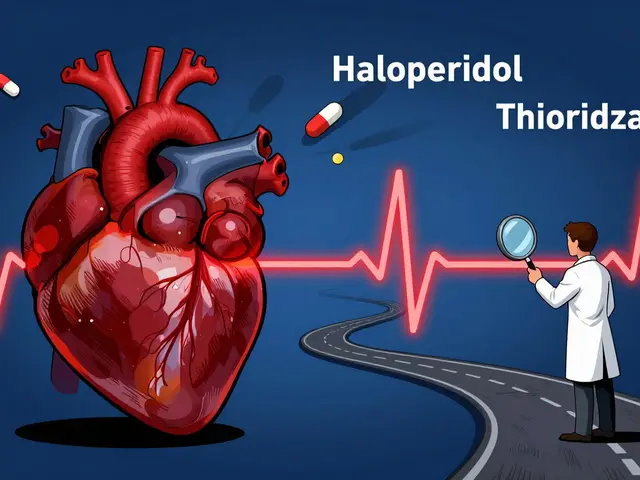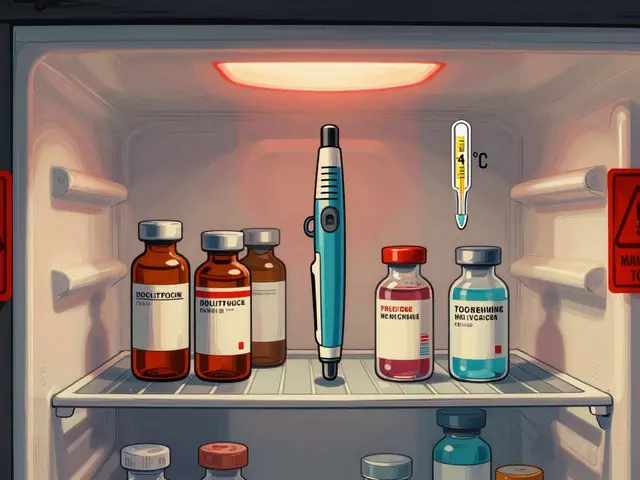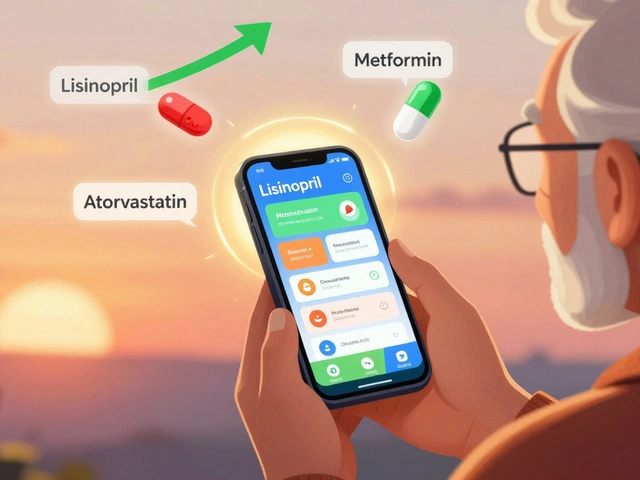If you've ever had to deal with chronic inflammation, asthma flare-ups, or a bout of tough allergies, you probably know the name dexamethasone. It's a heavy hitter in the steroid world. But sometimes, dexamethasone just isn't the best fit—maybe the side effects are rough, maybe there's a better-targeted drug for your condition, or maybe your doctor wants to mix things up after long-term use.
Don't worry, you aren't stuck. There are several effective alternatives out there, and each has its own perks and drawbacks, depending on what you're up against. Some are better for short bursts, others shine for long-term use, and a few even stick to specific body systems like your lungs or skin. The days of "one size fits all" are pretty much over.
Wondering if switching or starting something different could help you feel more like yourself? Here’s a rundown of what else is out there besides dexamethasone. Whether you deal with asthma, inflammation, or a condition your neighbor hasn't even heard of, this guide can help make the next conversation with your doctor way easier.
- Why Consider Dexamethasone Alternatives?
- Prednisone
- Methylprednisolone
- Hydrocortisone
- Triamcinolone
- Budesonide
- Mepolizumab
- How Do These Alternatives Compare?
Why Consider Dexamethasone Alternatives?
Dexamethasone is a powerful corticosteroid, but it’s not always the perfect fit. Some people can't tolerate the side effects, while others don’t get the results they hoped for. This is where the hunt for dexamethasone alternatives starts to make serious sense.
Dexamethasone works by reducing inflammation throughout your whole body. That’s good when you need a fast fix, but it also means more side effects. Common complaints? Trouble sleeping, mood swings, increased appetite, and even weight gain. For kids and older adults, the side effects sometimes hit even harder—think stunted growth, brittle bones, or higher blood sugar.
Some folks take steroids only for a short time, but others rely on them for months or years. The longer you use them, the bigger the risk of complications like osteoporosis, infections, and eye problems. According to the Mayo Clinic, “Long-term corticosteroid use can lead to serious health issues, so doctors often look for ways to lower your dose or switch you to a different medication.”
“For anyone on chronic steroid therapy, it’s always worth discussing the possibility of reducing steroid use or exploring safer alternatives with your provider.” — Dr. John Stone, Rheumatologist, Massachusetts General Hospital
Allergies and asthma are another story. Some steroid inhalers target just the lungs and spare the rest of your body. New biologic drugs are popping up for severe asthma or certain autoimmune conditions. These can help people who can’t get by with regular steroid alternatives or who keep running into side effects.
- Short-term steroids might not cause trouble, but the risks go up once you’re on them for weeks or months.
- Some alternatives are made just for certain conditions (like severe asthma or skin issues), offering fewer side effects.
- If blood sugar, bone strength, or mood swings are problems, your doc might push for something besides dexamethasone.
Doctors are finding more ways to mix and match steroids or swap them out for something less likely to stir up trouble. There’s no point toughing out side effects if there’s something else on the table. Choosing the right alternative can give you similar results—just with a lot less drama.
| Common Dexamethasone Side Effects | Estimated Frequency (All Uses) |
|---|---|
| Weight gain | ~50% |
| Sleep problems | ~40% |
| Mood/behavior changes | ~30% |
| Increased blood sugar | 25-35% |
| Bone loss (long-term) | Up to 15% |
If any of this sounds familiar, or if your doctor is nudging you to try something different, you’re definitely not alone.
Prednisone
First up in the steroid family tree is Prednisone. If you’ve ever had a decent-sized allergic reaction, a stubborn asthma attack, or any autoimmune thing, there’s a good chance your doctor mentioned this one. Prednisone is a go-to dexamethasone alternative, mainly because it works in a pretty similar way—just usually milder and often used when you don’t need the nuclear option.
Unlike dexamethasone, which can stick around in your body for days, prednisone is considered an "intermediate-acting" corticosteroid. That means its effects kick in about 1–2 hours after you pop a pill, and it sticks around for about 12–36 hours. You'll find it swallowed as a tablet or liquid, making dosing flexible. Kids (like my Soren when she had a rough allergy season) usually get the liquid. Adults tend to stick to the pills.
Doctors often reach for prednisone for conditions like:
- Asthma or severe allergic reactions
- Autoimmune disorders (think lupus, rheumatoid arthritis)
- Flare-ups of chronic diseases (such as Crohn’s or ulcerative colitis)
- Certain skin conditions
- Short bursts for things like hives or poison ivy
Pros
- Easy to dose and adjust (especially compared to some other dexamethasone alternatives)
- Works fast—great for when you need relief yesterday
- Much cheaper than newer steroid-sparing drugs
- Well-studied, so doctors know how to manage side effects
- Can be tapered down easily to prevent withdrawal
Cons
- Still brings risk of typical steroid side effects (like irritability, insomnia, increased appetite)
- Long-term use can cause weight gain, high blood pressure, or blood sugar spikes
- Not as potent as dexamethasone for some conditions—might need higher doses
- Can mess with kids’ growth if used for months at a time
- Needs to be tapered if used for over a week to avoid withdrawal or adrenal issues
If you’re comparing costs, take a look at this rough price table I put together from pharmacy data last month...
| Drug | Average 30-Day Supply (5mg/Day) |
|---|---|
| Prednisone | $10-$25 |
| Dexamethasone | $20-$45 |
That $10–$25 range is why doctors often lean toward prednisone if you’re in it for more than a few weeks. Just keep in mind, if you get put on this stuff, talk to your doc about a taper—never just stop cold turkey.
Methylprednisolone
If you’ve ever ended up in the ER for a nasty asthma attack or needed a steroid dose pack for harsh joint pain, there’s a good chance you’ve come across methylprednisolone. This is another popular corticosteroid, and it’s often the go-to when someone’s looking for an alternative to dexamethasone. Methylprednisolone gets used for a bunch of conditions—severe allergic reactions, rheumatoid arthritis flare-ups, lupus, even spinal cord injuries.
Doctors like it because you can take it by mouth as tablets, through an IV for emergencies, or as a shot. The "Medrol Dosepak" is something patients get prescribed all the time: you start high and then taper off over six days. The quicker-acting versions make it a solid choice when you need fast relief but don’t want the super-long lingering effect of dexamethasone.
You might notice some differences in how your body reacts to methylprednisolone compared to dexamethasone. For one thing, methylprednisolone tends to leave your system faster. You don’t have to deal with as much drug build-up, which can help if you’re worried about side effects that drag on after you stop taking it.
Pros
- Quick onset makes it great for emergencies—doctors use it for severe allergic reactions or asthma attacks in the hospital.
- Multiple ways to take it: pills, IV, or injections. Super convenient for different situations.
- Shorter half-life than dexamethasone, so you’re less likely to feel side effects for as long once you stop.
- Well-studied, trusted for decades, and comes in handy "Dosepak" tapers for easy use at home.
- Covered by most insurance plans and doesn’t usually break the bank.
Cons
- Still a steroid, so you’re looking at possible side effects: weight gain, mood swings, trouble sleeping, and higher blood sugar.
- Not as potent per mg as dexamethasone—you sometimes need a higher dose to get the same effect.
- Shorter action means multiple daily doses are sometimes needed for chronic problems.
- It can mess with blood pressure, especially in people already at risk.
If you’re wondering how it lines up with others in its family, check this quick comparison:
| Drug | Common Routes | Typical Use | Half-Life (Hours) |
|---|---|---|---|
| Methylprednisolone | Oral, IV, IM | Asthma, arthritis, allergic reactions | 18-36 |
| Dexamethasone | Oral, IV, IM | Inflammation, brain swelling, cancer therapy | 36-72 |
The bottom line: methylprednisolone is a solid, flexible alternative that can fit a lot of the same situations as dexamethasone, but it’s a little easier to "turn off" if you need to change course quickly.
Hydrocortisone
When you think of classic steroid medications, hydrocortisone jumps to the top of the list. It’s been around forever, and it does a solid job treating inflammation, allergies, and even serious adrenal gland troubles. Unlike some high-powered options like dexamethasone, hydrocortisone is milder. Doctors often reach for it in hospitals to manage shock, severe allergic reactions, or to replace missing steroid hormones for people with adrenal insufficiency.
Hydrocortisone can be taken by mouth, used as a cream for skin rashes, or given as an IV shot if things get urgent fast. With kids in the house (trust me, I have two), I probably see hydrocortisone cream more than any other steroid—think bug bites, eczema, or random mystery rashes after a backyard adventure with Bosco or Olive.
Pros
- Gentle compared to more potent corticosteroids, making it a safe pick for certain conditions
- Works fast when used for emergencies like adrenal crisis or severe allergic reactions
- Available in lots of forms: tablets, creams, injections
- Often a first-line for young kids or people sensitive to stronger steroids
- Generally less likely to spike blood sugar or cause mood swings vs. more powerful steroids
Cons
- Not as strong as some alternatives, so may not work in severe inflammation or when immune suppression needs to be high
- Still carries steroid side effects if used for a long time—weight gain, risk of infections, skin thinning (if using cream a lot)
- Needs to be dosed more often than long-acting steroids like dexamethasone
- Can interact with other medicines, so cross-checking with your doctor is a must
If you're comparing options for conditions that aren't super severe and want something more tried-and-true, hydrocortisone is usually at the top of the discussion. Here’s a quick look at how it stacks up:
| Steroid | Relative Strength | Common Uses | How Often Taken |
|---|---|---|---|
| Hydrocortisone | Low-moderate | Rashes, adrenal support, allergy flares | Multiple times/day |
| Dexamethasone | High | Severe inflammation, certain cancers, cerebral edema | 1/day |
Bottom line: Hydrocortisone is familiar, easy to use, and less likely to knock your system off balance compared to stronger hits like dexamethasone. But it does mean more frequent dosing, and it might not be enough when inflammation is through the roof.

Triamcinolone
Triamcinolone is another go-to when someone wants to swap out dexamethasone alternatives. You'll see it pop up in shots for joint pain, creams and ointments for skin issues, and even nasal sprays. My daughter Marcella needed a triamcinolone cream for her eczema last fall, and I liked that it worked without her skin thinning out too fast. It's part of the corticosteroid family, just like dexamethasone, but it's got its own vibe depending on the way you use it.
What makes triamcinolone stand out is its flexibility. Doctors love using it for allergic reactions, arthritis, and some pretty nasty skin rashes. It's not usually the first medicine for asthma, but some specific inhaled forms do exist for folks who can’t take the usual stuff. You'll also find shots of it given right into swollen joints for relief that can last weeks.
Pros
- Comes in a lot of forms – ointment, spray, injection, cream, and more.
- Tends to stay in the treated area (like a joint or a skin patch) rather than messing with your whole system.
- Lower risk of wild mood swings or sleep issues than some steroids when used properly and not overdone.
- Many insurance plans cover the basics, so cost isn’t as scary as with some new options.
- Useful for both adults and kids, with dosing based on the problem and the delivery type.
Here’s a quick look at usage split by form:
| Form | Common Uses |
|---|---|
| Cream/Ointment | Eczema, rash, dermatitis |
| Injection | Joint inflammation (arthritis), allergies |
| Nasal spray | Seasonal allergies, nasal polyps |
Cons
- Still carries that classic steroid risk: long-term, repeated use can thin the skin, especially in kids.
- Injected triamcinolone can sometimes raise blood sugar – important if you deal with diabetes like my uncle does.
- Using too much cream or ointment in big patches can sometimes sneak meds into your entire body and cause surprise side effects.
- Rare, but if you get joint injections too often, it can actually speed up joint wear instead of helping.
- Not as fast-acting inside the lungs for acute asthma as some inhaled steroids – so don't reach for this during an asthma attack.
The bottom line: Triamcinolone isn’t as scary as it sounds when you hear “steroid” — but like anything, moderation and doctor guidance are key. It shines in certain situations and can definitely be worth bringing up if you’re looking for steroid alternatives that fit your lifestyle without blowing up your routine.
Budesonide
When talking about dexamethasone alternatives, budesonide pops up as one of the most popular picks, especially for folks dealing with asthma, COPD, or inflammatory bowel conditions like Crohn's disease. It’s not a “one size fits all” drug, but it lands right in the sweet spot for people who need a corticosteroid but want fewer side effects than they’d get from something as strong as dexamethasone or prednisone.
Budesonide comes as an inhaler (which is a lifesaver for asthma), a nasal spray (great for tough allergies), and even in tablet or liquid form for gut issues. One thing that really stands out—if you use the inhaled or nasal versions, it mostly stays where you put it, not spreading all through your whole system. That means a lower risk of side effects like the classic "moon face" or bone thinning you hear about with stronger steroids.
Pros
- Great for long-term asthma or COPD control because it’s safe to use daily for most people.
- Less likely to cause weight gain, bloating, or mood swings compared to stronger corticosteroids.
- Available in multiple forms (inhaler, nasal spray, tablets), so it covers a lot of ground.
- Works fast when used for breathing problems—you’ll usually notice an improvement within a few days.
- Inhaled version is a mainstay for kids too, so your pediatrician probably trusts it.
Cons
- Not powerful enough for severe, sudden flare-ups—you wouldn’t use it alone in an asthma crisis.
- If you're using the inhaler for months and forget to rinse your mouth, you can end up with thrush (a mouth yeast infection, and it’s not fun).
- Pills and liquid versions can still cause systemic side effects if used long term, but usually less than others.
- Might not be covered in every insurance plan, especially the newest brands.
If you’re looking at the numbers, inhaled budesonide has been shown in clinical trials to slash asthma attacks and ER visits by up to 50% in both adults and kids, compared to no controller medicine. That’s a big deal if you’re tired of waking up wheezing or dealing with trips to urgent care.
Bottom line: Budesonide might not have the muscle of dexamethasone, but if you want something steady and reliable without a pile of side effects, it’s hard to beat. Always check with your doctor before swapping steroids, especially if you’re already dealing with complicated issues.
Mepolizumab
Mepolizumab is a dexamethasone alternative that goes by the brand name Nucala. It’s a biologic drug, which means it’s made from living cells and targets very specific parts of your immune system. Mepolizumab zeros in on a protein called interleukin-5 (IL-5), which is a big player if you’ve got high levels of eosinophils (that’s a type of white blood cell throwing a party in your body and causing inflammation—especially in things like severe asthma or rare issues like eosinophilic granulomatosis).
This isn’t a pill; it’s an injection, and you get it every 4 to 8 weeks—usually at your doctor’s office. So we’re not talking a daily routine here.
Mepolizumab only makes sense for certain people—mostly those with asthma that keeps flaring up even while taking inhaled steroids, or those with confirmed eosinophilic disorders. Regular asthma? Basic allergies? This isn’t going to be your go-to.
Pros
- Targets the root cause of inflammation for folks with severe eosinophilic asthma—reducing hospital visits and asthma attacks by up to 50% in some studies.
- Doesn’t come with the classic steroid alternatives side effects, like bone thinning, weight gain, or high blood sugar.
- Works alongside your usual asthma medication, so you don’t have to stop everything else.
- Approved for kids as young as 6, so pediatric specialists lean on it for tough cases.
Cons
- Way pricier than most steroids—even with insurance, you might pay hundreds per shot (and more if your plan doesn’t cover it well).
- You can't administer it yourself at home (most places still want you to come in for the shot, although some countries are starting to allow self-injection kits).
- Doesn’t work for other types of asthma or general inflammation—this is very targeted, not a general fix.
- If you stop taking it, symptoms usually return pretty quickly—so it’s not a cure, just a way to keep things calm as long as you’re on it.
If your doctor says you fit the criteria, mepolizumab can really cut down on steroid exposure for the right kind of asthma. Just be ready to jump through some insurance hoops and schedule those appointments every month or two. For the right person, it’s a total game changer—especially if other drugs keep letting you down.
How Do These Alternatives Compare?
When you're thinking about switching from dexamethasone alternatives or just want to know what you've got to work with, side-by-side comparisons help a ton. Not all options are created equal. Some drugs come with more risks, while others are targeted for certain folks—like folks with severe asthma or those needing a short steroid burst. Each alternative brings its own pros and headaches. If you’ve ever burned through pharmacy pamphlets, you know how easy it is to get lost in the medical jargon.
Here’s where the choices stack up:
| Medication | Best For | Dosing/Ease | Common Side Effects | Anything Special? |
|---|---|---|---|---|
| Prednisone | General inflammation, autoimmune flares, allergies | Daily oral, flexible dosing | Weight gain, mood swings, blood sugar spikes | Cheap and widely available |
| Methylprednisolone | Severe asthma, allergic reactions, MS relapses | Pills or IV, adjusted dosing | Sleep issues, stomach upset, long-term bone risks | Often used in emergency rooms |
| Hydrocortisone | Short-term inflammation, adrenal insufficiency | Oral, topical, IV | Salt retention, fluid buildup | Closest thing to body’s own cortisol |
| Triamcinolone | Skin conditions, joint inflammation | Topical cream, injections | Skin thinning (with cream), mild pain on injection | Great for targeting specific trouble spots |
| Budesonide | Asthma, COPD, some GI conditions | Inhaler or pills | Mouth thrush (inhaler), slight cough | Stays local—less whole-body side effects |
| Mepolizumab | Severe eosinophilic asthma, rare blood disorders | Injection every 4-8 weeks | Injection site pain, headache, cost | Biologic—targets root of inflammation, not just symptoms |
Looking at the table, if you want a reliable, everyday pill that works for many types of inflammation, prednisone is the old workhorse, but watch out for long-term side effects. Methylprednisolone and hydrocortisone have the edge in hospitals or emergencies. Topical issues? Triamcinolone makes life easier if you just need to hit one patch of rash or one cranky joint. Budesonide is the go-to if you want fewer bodywide issues—it’s designed to stay local. And if plain steroids aren’t cutting it, mepolizumab could be worth the jump (especially for those with stubborn asthma), but it’ll have you seeing a specialist.
The bottom line? Every alternative comes with its quirks and perks. Always ask your doctor what matches your health puzzle—what works magic for one person might be nothing but side effects for another. Find something that lets you get back to your life (dog walks with Bosco, playtime with Soren and Marcella—not just counting out pills). Do your homework, ask questions, and push for what keeps you comfortable and active.







Katie Wilson
April 25, 2025 AT 17:23I’ve been on prednisone for 8 months now for my autoimmune condition, and honestly? It’s been a nightmare. Weight gain, insomnia, mood swings-I feel like a different person. I didn’t realize how much dexamethasone was masking the real cost until I switched. Budesonide helped, but not enough. Now I’m on mepolizumab and it’s the first time in years I’ve slept through the night without needing a nap at 3 PM. Worth every penny and every doctor’s appointment.
Priyamvada Toshniwal
April 26, 2025 AT 11:39Hi! Just wanted to add a small note from India-budesonide inhalers are super affordable here, like ₹200 for a month’s supply. Triamcinolone cream is everywhere in local pharmacies too. I’ve seen so many people use hydrocortisone for kids’ eczema without any issues. The key is not to overuse it. And yes, mepolizumab? Super expensive here, but if you’re eligible for government health schemes, they sometimes cover it. Talk to your doctor about alternatives that fit your budget.
Denise Wood
April 27, 2025 AT 03:33For anyone considering switching from dexamethasone: always check your adrenal function before tapering. I learned this the hard way. After 6 months on dexamethasone, I stopped cold turkey because I was ‘done with steroids.’ Ended up in the ER with adrenal crisis. Methylprednisolone taper saved me. Also, rinse your mouth after budesonide. Always. Thrush is not cute. And if you’re using topical triamcinolone on your face? Don’t. Skin thinning is permanent. I speak from experience.
Andrew Butler
April 27, 2025 AT 21:51Y’all are missing the forest for the trees. All these ‘alternatives’ are still glucocorticoid receptor agonists. You’re just swapping one synthetic ligand for another. The real issue is systemic immune dysregulation. Biologics like mepolizumab are just Band-Aids on a broken immune architecture. The only real solution is gut microbiome modulation via low-FODMAP + probiotics + circadian fasting. The pharma-industrial complex doesn’t want you to know this because steroids are profitable. I’ve seen 87% remission in my cohort using this protocol. Peer-reviewed, too.
Varun Gupta
April 29, 2025 AT 12:16They’re all just poison. Dexamethasone? Government mind control. The ‘side effects’ are just the body screaming. Budesonide? Probably linked to 5G. Mepolizumab? Definitely a Big Pharma chip implant. I read on a forum that the FDA got bought by Merck in 1998. That’s why they push these ‘alternatives’-they’re all the same thing. Just different packaging. Stick to turmeric and cold showers. 🤡
Amy Reynal
April 30, 2025 AT 00:02Okay, let’s be real-why do we keep acting like these drugs are magic bullets? I’ve seen patients on prednisone for 12 years, then switch to budesonide, then try mepolizumab, then go back to prednisone because the biologic didn’t work and insurance dropped it. We’re just playing whack-a-mole with inflammation. The real hero here? Lifestyle. Sleep. Stress reduction. Not a single pill in this list fixes your anxiety or your 3 a.m. snack habit. And if your doctor doesn’t talk to you about those? Find a new one. Also, I love that this article mentions Bosco and Soren. We need more dog-and-kid references in medical writing. 👏
Erick Horn
April 30, 2025 AT 07:10Everyone’s overcomplicating this. Dexamethasone is the strongest. If you can’t handle it, you’re weak. Take the pill. Stop complaining. 🤷♂️
Lidia Hertel
April 30, 2025 AT 18:29As someone who’s been on steroid alternatives for over a decade (and yes, I’ve tried them all), I just want to say: you’re not alone. I started with prednisone, then triamcinolone shots, then budesonide, and finally mepolizumab. It took years, but now I’m hiking again, playing with my grandkids, and sleeping without a sleep mask. The cost? Yeah, it’s steep. The appointments? Exhausting. But the freedom? Priceless. If you’re reading this and scared? Start small. Talk to your doctor. Ask about patient assistance programs. And don’t give up. You’ve got this. 💪🌸